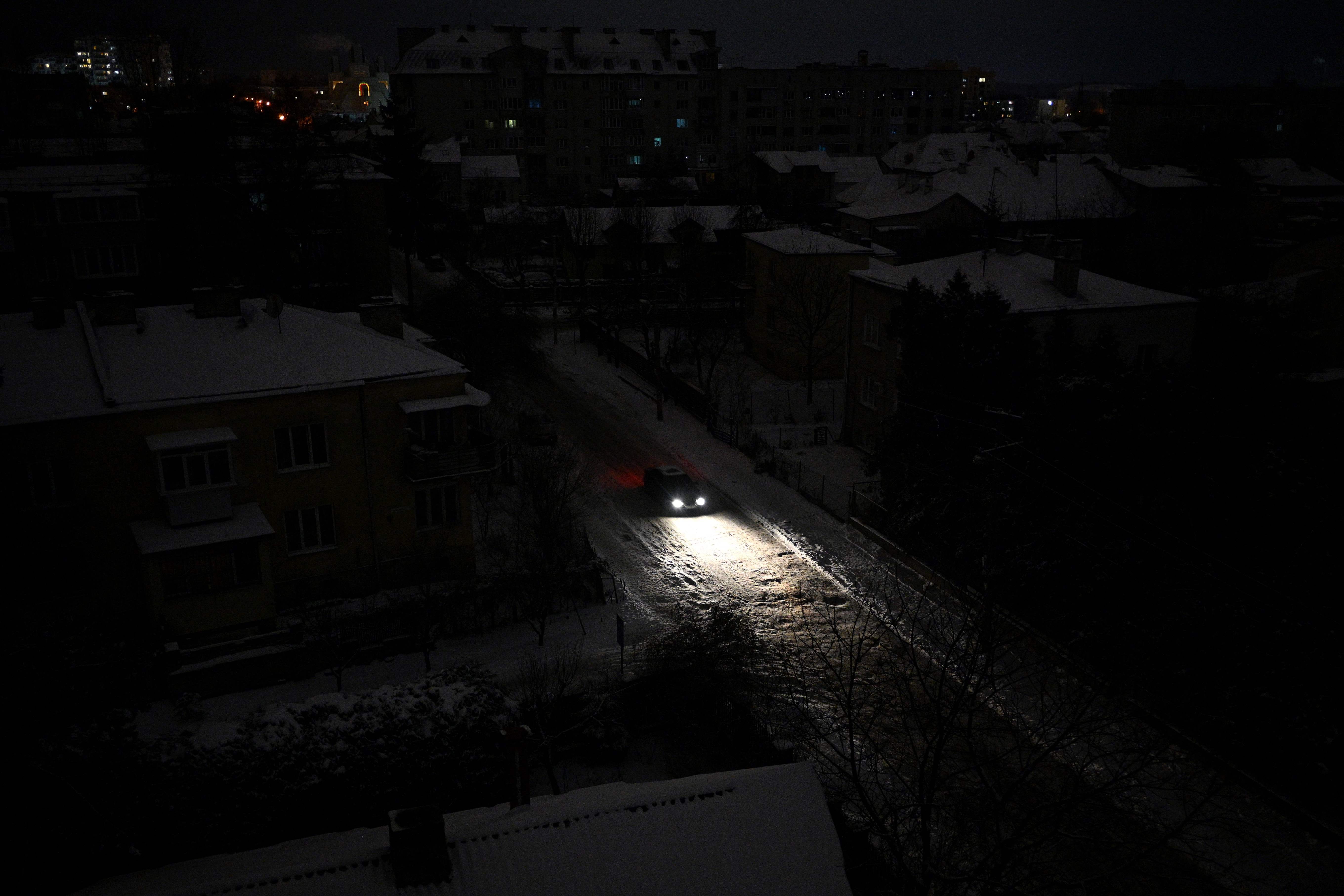In cities without power across Ukraine, doctors have performed heart surgeries with flashlights, barbers are cutting hair under the light of smartphones, and musicians are playing for audiences under candlelight.
Ukrainians are living with less electricity since Russia began unleashing missiles and drones to attack power grids around the country, causing blackouts and cutting heat, power and water to millions of Ukrainians.
Energy losses this winter may be “life-threatening for millions of people in Ukraine,” particularly those living in cities close to the fighting in the east and south, according to the World Health Organization.
During the day, there is a constant hum of generators on Ukrainian streets. At night, many cities plunge into darkness to save energy.
Russian attacks target power grids
Ukraine has lost about half of its ability to generate electricity, Human Rights Watch reported. The biggest loss came after Russian forces seized the Zaporizhzhia Nuclear Power Plant, which accounts for at least 20% of the country’s generation capacity.
Several thermal power plants are in territories now occupied by Russia. Military attacks have damaged nearly all of Ukraine’s thermal and hydroelectric power plants.
Electricity has to be adjusted before it’s distributed across the power grid. Power plants generate electricity and send it to transformers, which increase the voltage so it can be carried by long-distance transmission lines. Those lines send the electricity to substations, which reduce the voltage so power lines can send it to homes and businesses.
Substations have been among the main targets of Russian missiles for several months, according to Maksim Timchenko, CEO of DTEK, Ukraine’s largest private power generator. When they are damaged, power can't be delivered to the grids.
Ukrainian Prime Minister Denys Shmyhal estimated that 40% of Ukraine's network facilities transporting electricity from power stations to urban areas and towns have been damaged to varying degrees.
Consequences of attacks
The energy system becomes more fragile every time there's a new wave of attacks.
After Russian attacks on Oct. 10-11, Ukraine had to suspend electricity exports to neighboring European states for an indefinite period.
Russian shelling on Nov. 23 caused problems at Ukrainian nuclear power plants, according to Ukraine's ministry of energy.
• Khmelnytsky NPP was disconnected from the power system.
• Rivne NPP was put into emergency operation mode.
• South Ukrainian NPP had an emergency shutdown of power units.
According to the International Energy Agency, nuclear power plants produce more than half of the country’s electricity.
Living in the darkness
When a substation connecting the regions is hit, one region often gets a surplus of energy while another gets a deficit. Successive waves of attacks have led to a constant shortage in the Ukrainian energy network.
To maintain the balance between electrical generation and consumption, Ukraine's energy operator Ukrenergo has begun rolling blackouts, temporary power outages or reductions.
Cities in Ukraine strive to maintain a so-called normal power outage schedule of four-hour blocks of power three times a day.
Far-reaching effects of power cuts
During blackouts, there is often no cell service or internet access. Elevators don't run.
Pumping stations, which provide households with water, stop. It may take a while to get them started. Even then, not all city residents may get water back. The higher you live in a building, the more water pressure is needed to deliver water. It can take hours to return pressure in the water supply system to normal.
Ukrainian cities rely on a centralized heating system where vast networks of pipes carry steam and hot water to households. Large gas-fired boilers heat the water that circulates across the system. Residents of several cities lost heating after the Russian attack on Dec. 16 because boiler rooms lost power.
The Ukrainian government has opened more than 5,000 "points of invincibility" across the country where people charge their devices, access the internet and warm up. But these are not enough for a country with a prewar population of about 40 million.
Without electricity, electric trollies, buses and subway systems don’t run. Traffic lights can't operate. The number of people killed in traffic accidents in the capital has increased sixfold after the rolling blackouts began, according to Kyiv police spokesman Andriy Molokoyedov.

Repairing grid faster than Russia strikes
Winter conditions, in particular frost and freezing rain, complicate and prolong the grid repair. As crews race to restore basic utilities, new attacks threaten to undo their work.
It takes a minimum of six months to 18 months to manufacture a transformer, according to Olexander Kharchenko, director of the Energy Industry Research Centre, an independent research and consulting company. Transformers are also very large and difficult to transport.
Some damage to energy infrastructure takes only a couple of hours to fix. However, if the attacks stopped, it would take up to three months for Ukraine to provide a 24-hour electricity supply to consumers, and the full recovery of the system would take up to three years, according to Kharchenko.
At the same time, according to Volodymyr Kudrytskyi, head of the board of Ukrenergo, a complete blackout of the whole country is unlikely.
"Our energy system is still intact and controlled by the Dispatch Center Ukrenergo," Kudrytskyi said. "We are still far from an apocalyptic scenario. I don't even know how realistic this apocalypse is."
Contributing: George Petras